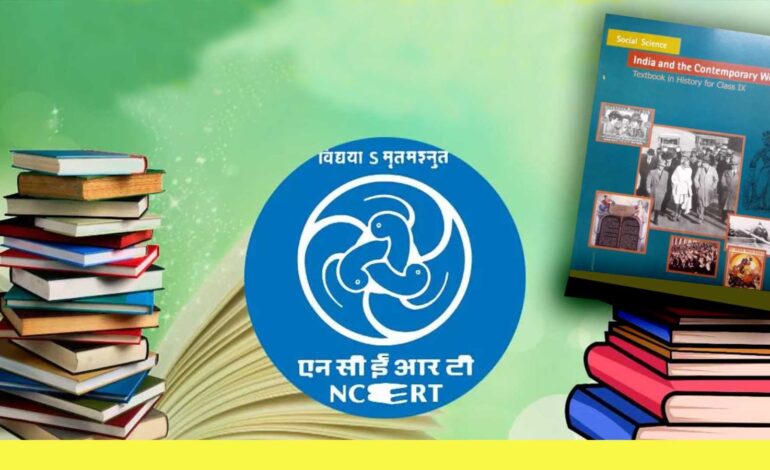
The move by the National Council of Educational Research and Training (NCERT) to dramatically alter the 12th class textbooks marks a big diversion from the manner in which the Indian education system had sought to advance advanced scientific tools of learning and analysis, especially at the level of teaching history. Post-independence, the teaching of history was modelled in this manner under the leadership of Jawaharlal Nehru, India’s first Prime Minister. That had marked a significant departure from the pedagogical practices during British India, but it was undoubtedly a positive turn. That history needs to be understood to concretely evaluate the ill effects of the current changes brought in by NCERT.

In the case of British India, the eighteenth and nineteenth centuries were not just the period of colonial exploitation. It was also the time when varying approaches towards Indian culture and educational system were prevalent among the colonial administrators and exploiters as well as among Indian intellectuals. British scholars like Henry Thomas Colebrook can be seen to be opposing the efforts to westernise the Indian people. They urged the English rulers to sustain the educational system of Muslims and Hindus by means of Sanskrit, Persian and Arabic. There were also some businessmen who believed that this would be a more useful means to maintain power and persist with exploitation. Conversely, scholars such as James Mill and Thomas Macaulay criticised the practice of valorising the ancient Indian culture held dear by the natives.
The Common Goal
In fact, the colonial rulers and intellectuals had a common goal. That was to exploit the natural resources and cheap human labour of the colonies to the maximum and process them into products in their factories and then sell them at a higher rate in the very same colonies for an even higher profit. In other words, those who argued in favour of traditional education for Indians as well as those who argued for modern education were on the same side when it came to their ultimate goal.
All imperial powers, not just the British, were involved in similar disputes and pursuits in their respective colonies. The policy of the French to exploit resources indiscriminately without any kind of material investment in their colonies was opposed by Paul Bernad, the banker and economist. He argued that the exploitation of resources should be done only after investing in the country and developing the educational system and basic facilities in Vietnam, which was under colonial French rule between the late 1800s to 1954. British rulers adopted and followed similar policies in India. Colonialism expanded in India by interacting with the fields of indigenous culture, education and history. This, of course, resulted in “Educating the nation”, which,in many ways, became the basis of the nationalist movement. This was also, essentially, in response to the deceptive strategy termed “Civilising the Natives”.
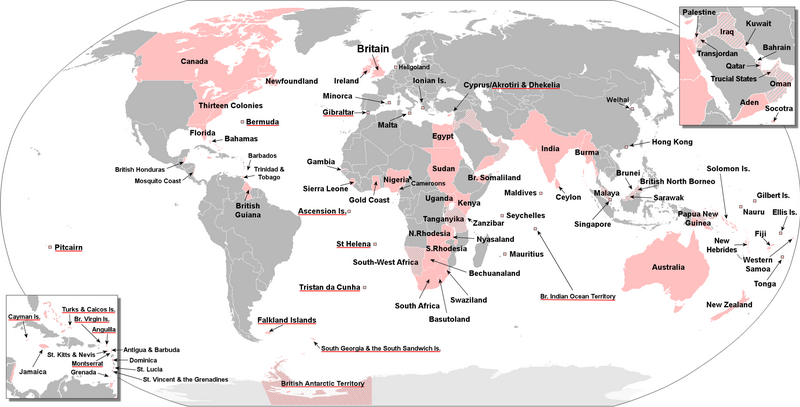
The texts on Indian history that were written during the British colonial rule were a part of an endeavour to portray Indians as ignorant and uncivilised and in order to form a “mission to civilise them”. They resorted to this strategy of creating divisions even in dividing (or classifying) the different periods in Indian history. Without any historical sense or logic, they divided the history of India into the Hindu era, the Muslim era and the British era. The colonial logic behind this move was just to show that the Muslim dynasties in India were established by destroying the Hindu era. And that the British assumed power by dethroning the Muslim rulers. One can notice, in these classifications, how they cleverly strived to show that the British had no religion (while hiding their Christian identity). The history text books released by NCERT after the national syllabus revision of 2005 rejected these colonial stereotypes and included a more scientific interpretation of history.
Those who wrote nationalistic historical texts ( which included both native Indians and foreigners who took to the idea of India ) during colonial rule had to write and interpret history in a way that inspired nationalism and at the same time opposed the colonial historical studies. That is how a methodology of writing history that valorised all native symbols, imaginations, myths and local heroes came into being. Such an approach served in luminating the national greatness. But in essence and imagination, the seeds of social division sowed by the British were evident in it. It amplified a Brahminical nationalist past and its symbols throughout.
Tilak and Gandhi and the Different Reading of Bhagavad Gita
One has to just analyse the political perspectives of the nationalist leader Bal Gangadhar Tilak to understand how dangerous this wasp. There was no nationalist leader who did not reiterate his famous declaration that ‘freedom is my birth right’. Yet, as you study his socio-political and cultural perspectives, his concept of Hindu Rashtra will become evident. Afterall, he was not just a vocal advocate of Hindu Rashtra, but also of Maratha Brahmin supremacy. Not many might have read in history texts about his threat during a Congress conference, where he said that if Brahmins and non-brahmins were to be served food in the same place, he would set fire to the pandal himself.
But Gandhiji acted in a different manner in another conference of Congress. One day when he woke up, he saw human excreta in front of many rooms. Upon enquiry, he was told by the volunteers that it was done by the upper caste people and was to be cleaned up by the people from lower caste called ‘mali’. He then asked them to bring a broom and a bucket. It is written that those who were present there at that time accompanied him in cleaning up the place afterwards. This was also the way two people who read Bhagavad Gita from different angles interpreted life. This instance is shared here to point towards the real life context showing the difference in perspectives of writing nationalist history.
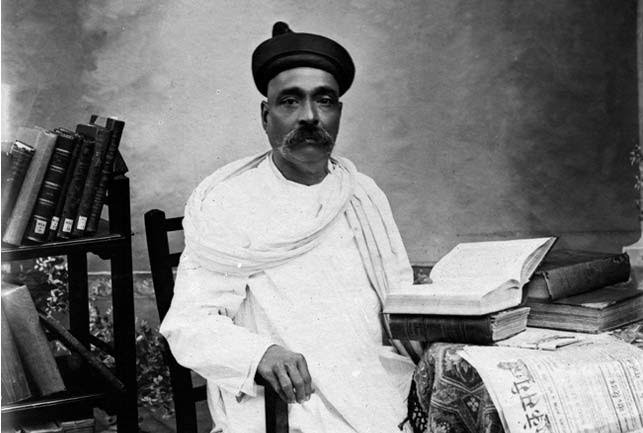
The truth is that nationalist historians could not accept the fact that history is a sum total of cultural incorporations and diversities. Anything that was not a part of Brahminism was kept apart. Not only the political influence of the prominent Muslim rule that lasted from the 10th century to 19th century, but also the process of formation of a rich and beautiful cultural confluence was excluded from Indian history. It was indeed nationalist history writing, but it followed the writing methodology of partition.
The Importance of Nehru and Nehruvian Influence
That we had a Prime Minister who had the historical sense to recognize the danger of such a perspective is not a small thing. It must not have been a big deal for the genius that ‘discovered India’. The contribution of Jawaharlal Nehru in transforming the education, history and intellectual life of India is beyond comparison.
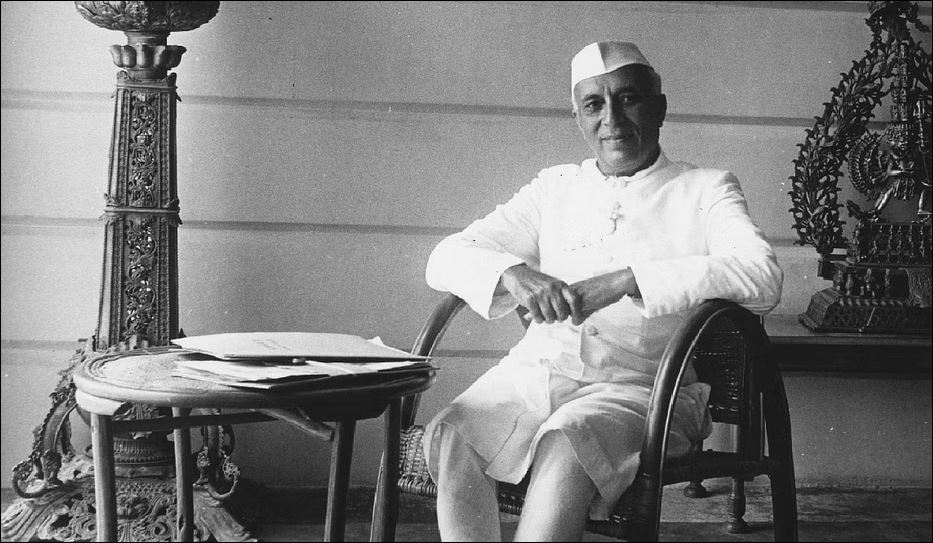
Jawaharlal Nehru was against romanticizing the past. He believed that only if we understand our past correctly can we build a prosperous future. He does evaluate the Muslim era. He has a clear understanding as to how it was isolated from the writing of nationalist history. In his speech titled ‘On Understanding History, he talks about the Muslims having been Indianized with their Indian roots and also as to how even the Rajput rulers acknowledged the leadership of the Mughals. He warned about the worst consequences of mixing facts and myths. He said it would split life into smithereens creating a vagueness in our perspective. It is not easy to understand different cultures. He assimilated it seamlessly. He was able to be a Thai when in Thailand and a Mexican when in Mexico because of his cosmopolitan perspective of cultural inclusiveness, not out of pretentiousness and lack of heartfelt respect for different cultures.
Nehru was a leader who took the most creative positions regarding the assimilation of languages. Once he summoned Satyanarayana, a member of the committee for languages to his room and asked him to give a list of the prominent languages in India. Satyanarayana prepared him a list of 12 languages. Nehru added a thirteenth language in the list. Then his Brahmin friend who was standing next to him took the list and read it. Seeing the last language added to the list, he got angry: ‘Urdu! Whose language is it?’
An unfazed Nehru said: ‘Mine. It is the language of my forefathers.”
The friend got triggered further. “Being a Kashmiri Brahmin, aren’t you ashamed to say that Urdu is your language?’ Nehru took the list and added Sanskrit as the fourteenth language.
Sunil Khilnani, the historian, notes that Nehru is the scholar who reformed Indian English just like Tagore reformed Bengali. Nehru had the ability to use English beautifully even in extremely emotional moments. Two instances are enough to prove this – his address after the murder of Mahatma Gandhi beginning ‘the light has gone out of our lives..’ and his famous speech when the country got independence “long years ago we made a tryst with destiny…’We experience those historical moments through these words of Nehru. The world reads India in its historical and cultural perspectives through the English made beautiful by Nehru.
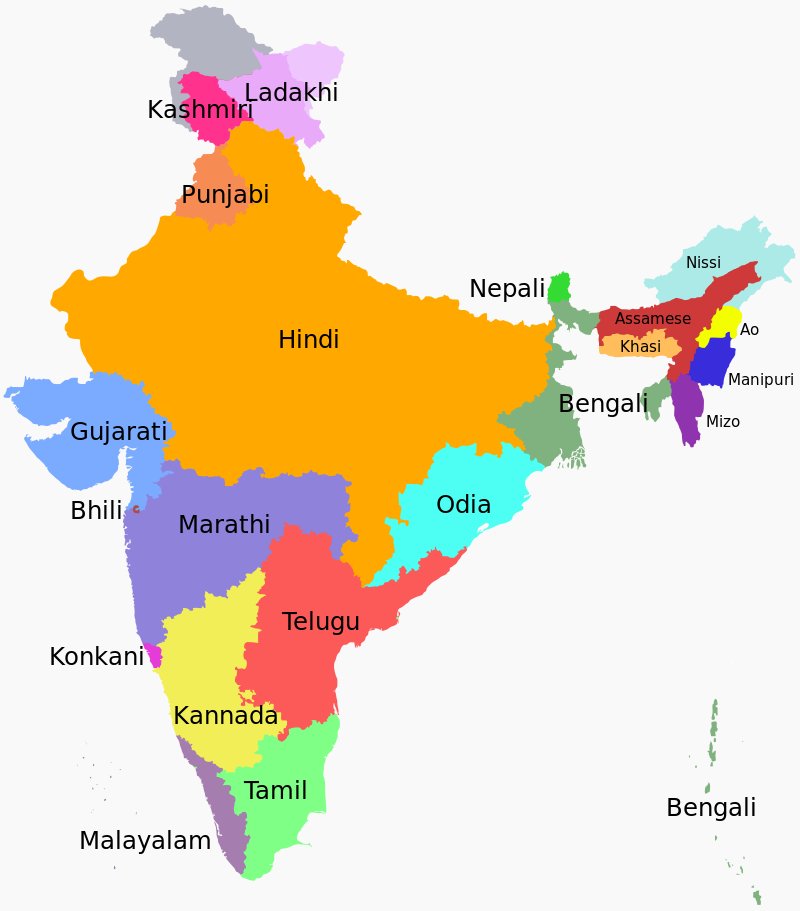
It is impossible to explain the formation of “Modern India “without explaining Nehru. For him, the base of free India was established in scientific historical inquiry. He had reminded the inevitability of socialism as early as in the Lahore session of Congress in 1929. Then by 1936 he declared that scientific socialism {Marxism) is the only way to India’s development. But his westernised ideology and Gandhiji’s original Gandhian ideology faced each other with disagreements. The content of the political party called Indian National Congress was also an issue. It was not friendly towards the working/lower/Dalit class people; instead, it was to a large extent, in favour of the interests of a group of capitalists and landlords. Their agenda was limited to achieving political freedom to India and did not extend to completing a socio-economic revolution. That was also the most powerful criticism against Congress. It is this class-caste combination that limited Congress to a centrist party later on. For the same reason, the socialist ideas of Nehru were limited to a Mixed Economy.
While bringing Bipin Chandra, Satish Chandra and R S Sharma to the forefront of Indian historiography, Nehru aimed at using the most scientific tools in historical analysis and interpretation. Even those who opposed Marxism have admired its ability for historical and social analysis. Correcting the errors of colonial as well as nationalist perspectives and using more scientific tools to write history started like this. I remember Dr. K. N. Panicker pointing out as to how some Marxist parties might refuse to accept historical truths that are discovered using Marxist historiography. Indian historiography continued to be empowered by the later historians such as Romila Thapar, Irfan Habib, K N Panicker and Sumit Sarkar.
The NCERT and Its New Abominations
The move to exclude the mention of Babri Masjid from 12th standard textbooks by NCERT is a cowardly attempt to wipe out facts from history. This serious change has been made in the chapter called ‘Recent Developments in Indian politics’. Babri Masjid has been replaced by the Three Domed Structure. In the Malayalam story “Thiruth” by renowned writer N S Madhavan, sub editor Suhra, in a state of intense dilemma, consciously makes the mistake of describing it as ‘disputed temple’. Editor Chulyat corrected it to Babri Masjid using his blue pencil like a chisel.
NCERT has not just changed the name of the Babri Masjid, but also obliterated all references to the demolition of the Masjid. Wherever Babri Masjid is to be used, it has been replaced by Ram Janmabhoomi. Moreover, the chapter says that everyone warmly accepted the decision to give away the land for constructing Ram temple. Earlier textbooks of the NCERT had given a clearly secular political message in the same chapter. They had used newspaper headlines such as ‘Babri Masjid demolished’, ‘Ayodhya BJP’s worst miscalculation: Vajpeyee’, ‘Violent Reaction Worldwide’ etc for this. NCERT has removed all these references in the new edition.
In earlier textbooks, these things were discussed in the chapter following the explanation regarding the Hindutva ideology as proposed by V D Savarkar. Similar explanations about the Godhra massacre were also included in the same chapter. Multiple changes have been made at various stages in the new textbooks designed by NCERT after the BJP led by Narendra Modi came to power in 2014. They have adopted the strategy of changing the parts which are unfavourable to Hindutva politics instead of changing the entire texts.
I shall discuss some examples here. There was a chapter in the ninth standard history text book titled Clothing: a Social History. In this, the part discussing the protest of Channar women demanding the right to cover their breasts (thol seelai porattam) was removed from the text. The apparent reason for this change was that the strike was against the prominent Nair community who were also considered an influential group for the Sangh Parivar. There were some more objectionable details in the text regarding Hindutva and so the chapter itself was removed from the syllabus.
Along with that the chapter ‘History and Sport: the Story of Cricket’ was also removed. Similar interferences were done in the Std X textbooks as well. The reason why the chapter titled Novel, ‘Society and History’, was removed must have been because it discussed the anti-Muslim content found in the early Indian novels as also the manner in which some of these novels depicted rising Hindutva nationalism. The textbook illustrates how ‘Anugiriya Binimoy ‘ by Buddhadeb Mukhopadhyay and ‘Anandmath’ by Bankim Chandra Chathopadhyay highlighted anti-Muslim ideas even while celebrating Brahminical supremacy.
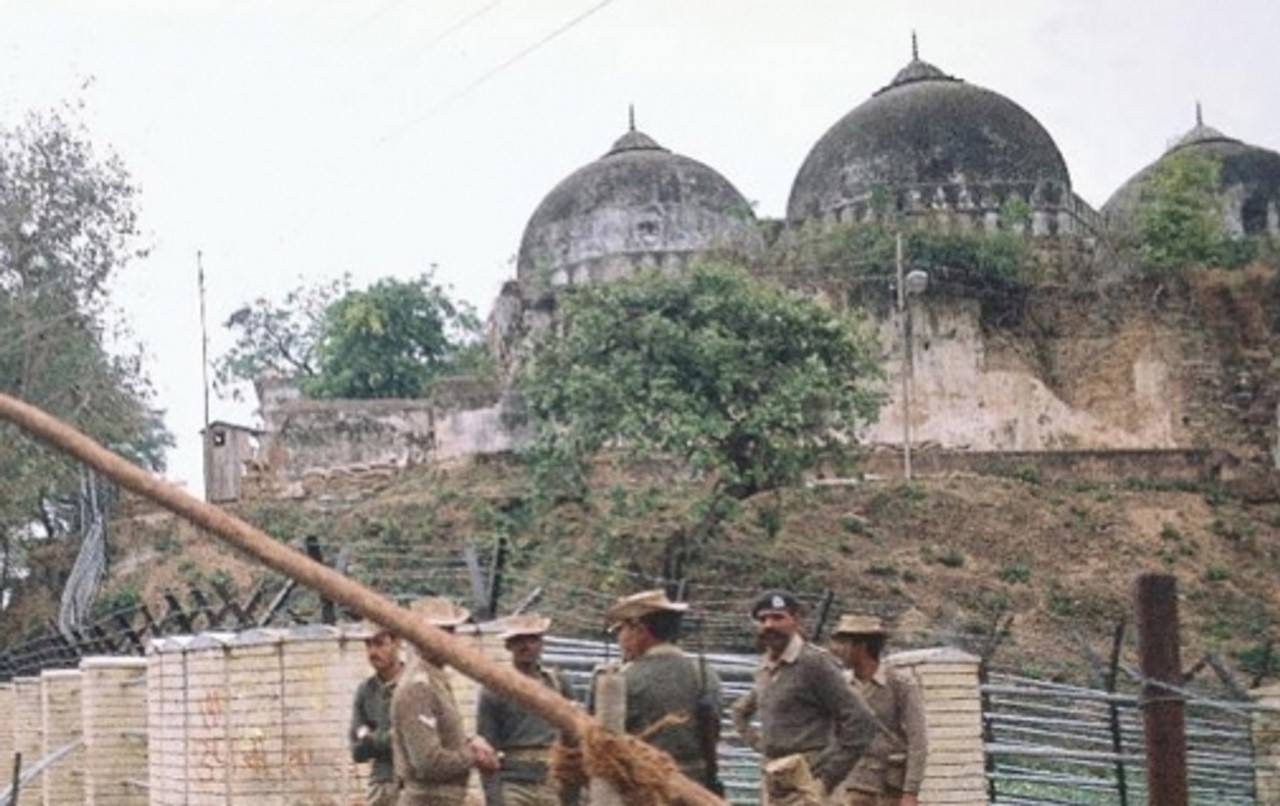

The very first chapter of the earlier History text book of Std XI began with an explanation of how early human habitation was developed. That itself is against the Hindutva ideology. There used to be a chapter called’ Central Islamic Lands’ , suggesting the emergence of modernity in the world following that. Both the chapters are excluded from the textbooks now. The first part of the Std XII history textbook used to contain socio-historical analyses based on the studies of Mahabharata. No fundamental change has been made in it. Still, the manner in which textbooks from Std 6 are being deconstructed now, gives rise to the doubt whether the scholars of the Hindutva School understand that textbooks are tools of critical interpretation. There have been extensive revisions in the Political Science textbooks from Std IX to Std XII. NCERT initially removed cartoons criticising politics based on religion. Then it went on to remove certain parts of chapters and at times entire chapters.
The famous chapter titled’ Democracy and Diversity’ is no longer in the syllabus. Through this the NCERT has denied the students an opportunity to analyse racism, communalism and casteism. Yogendra Yadav and Suhas Palshikar are the two people who designed the content and ideas discussed in the Political Science text books of class 9 and 10. Their names are still included in the textbook committee even after textbooks have been cut and torn apart, destroying the original concepts and content. They have demanded that their names be removed from the textbook unless the changes vulgarising real history are withdrawn. Both of them have also stated that they would take recourse to seek legal action if NCERT did not remove their names.
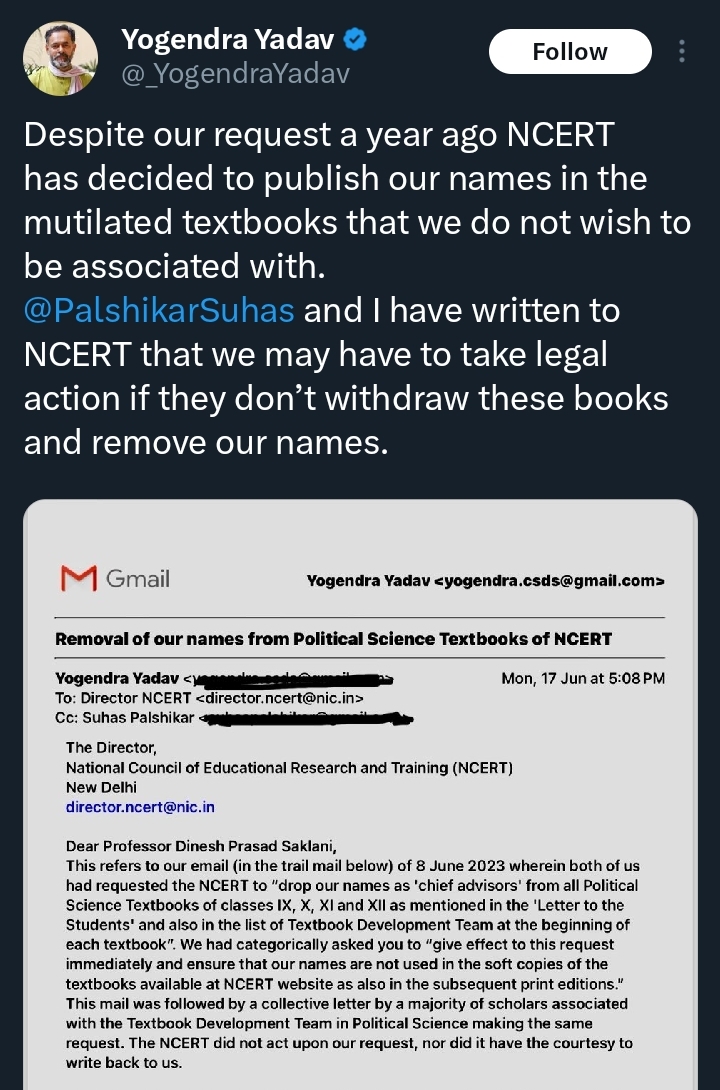
It goes without saying that education and history are the worst enemies of fascism. History has shown to the world how Hitler, the most striking example of how fascism tried to misappropriate and misuse these two streams. After Modi came to power in 2014, more than 200 historians, sociologists and intellectuals from India and abroad had expressed concern about the dangers to India’s historiography and cultural public life. Soon, 47 pro Sangh Parivar intellectuals came forward with a response to it. They rejected all the scientific historiographic ventures that had been initiated after the Indian Council for historical research (ICHR) came into being. Instead, they sought to propagate the hate-filled, divisive and unscientific historiography rooted in Hindutva.
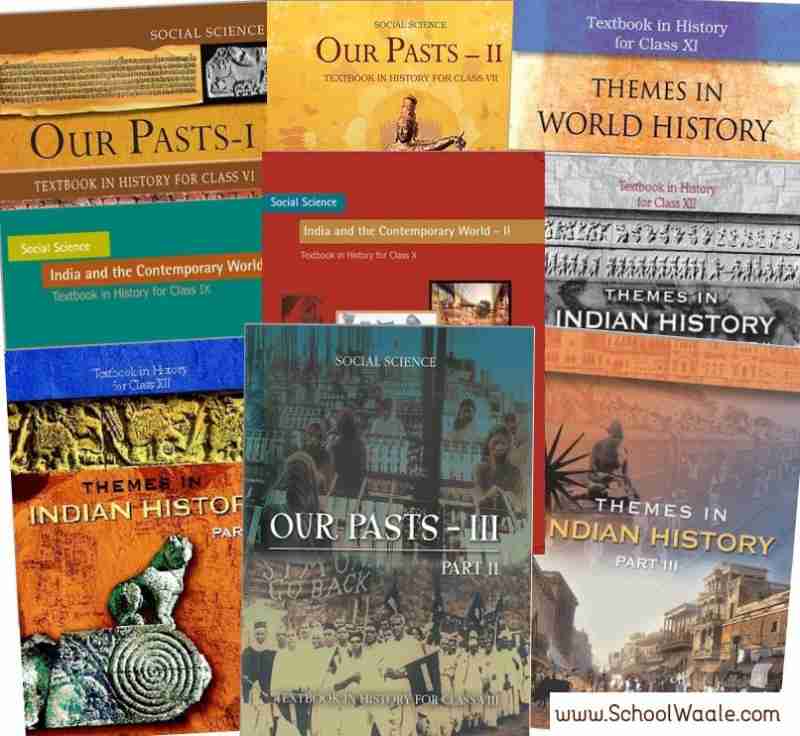
Facts are erased from the history. Myths and fables become history. Baseless arguments are produced for all that. NCERT gives the strange reason that children need not study about revolts and that is why the name Babri Masjid is removed from the text. If that is so, can they study about Bhagat Singh? What about Subhash Chandra Bose? Can they learn about his organization called Azad Hind Fouj? Can they learn about the first and second world wars? Why, the first part of the class 12 history text book includes as mentioned earlier, a critical study of Mahabharata. Can they rely on that legend leading to the battle of Mahabharata for studies? One just has to skim through the newspapers papers to understand how xenophobic some of the middle aged in contemporary times are even though they learned their elementary history lessons in not-so-distorted versions. So, distorting history again and again will just poison the coming generations more.
Thoughts, views and questions that oppose the State’s interpretation of history are not acceptable during the Hindutva rule. Words praising the State alone are desirable. But efforts have to be made to bring back the original sense of history to our textbooks and classrooms. Such an effort is absolutely essential to the process of building a new India, committed to the values of the Constitution, however arduous that effort may seem.


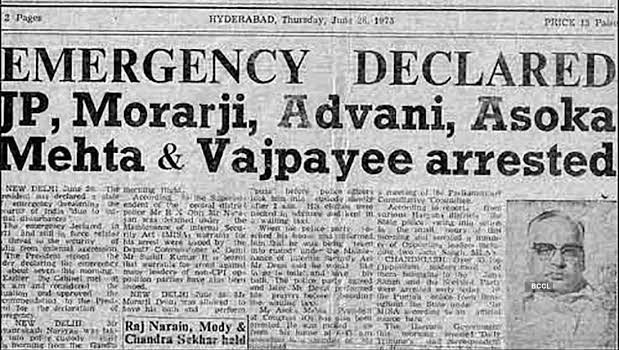




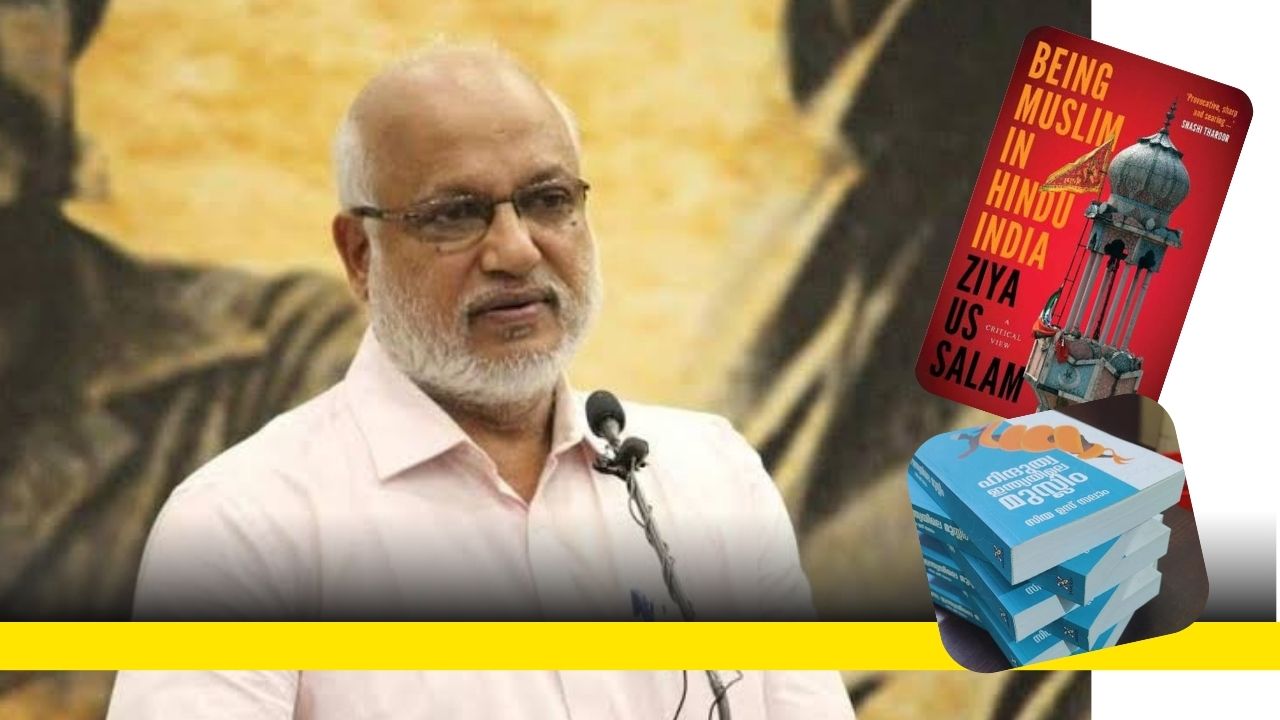




Knowledge and history are the enemies of religion.”
— Napoleon